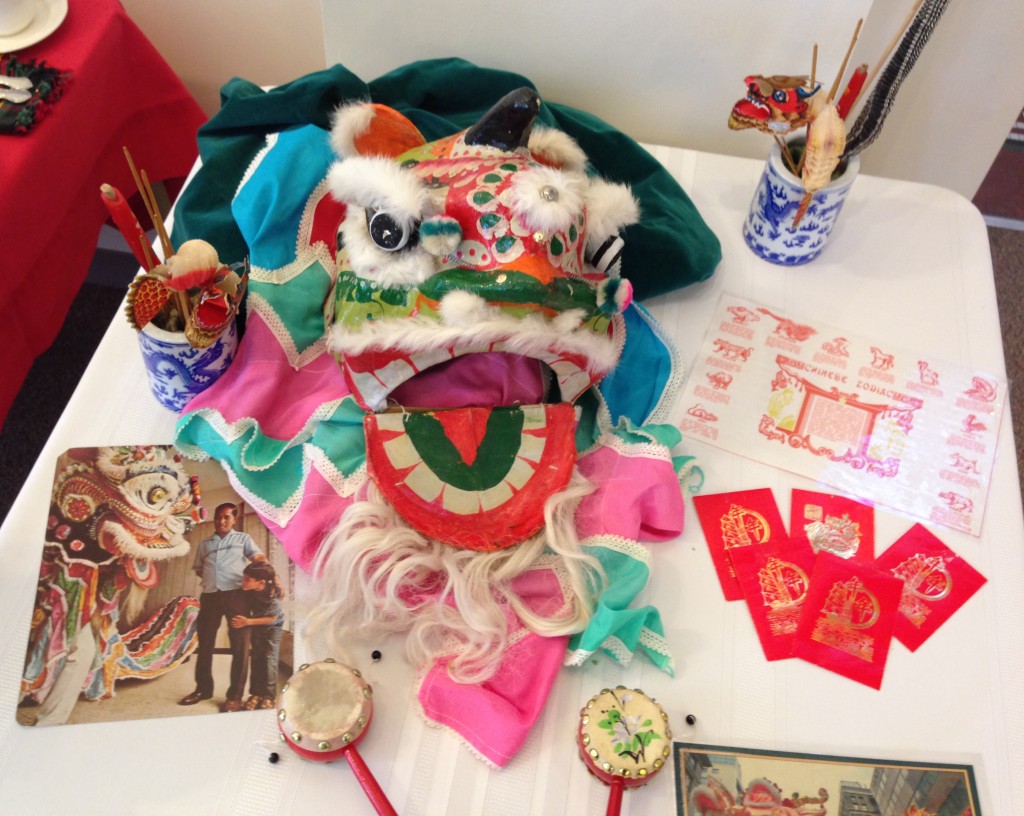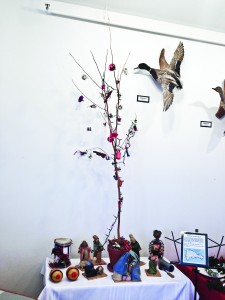Elgin Public Museum examines commonality of holidays
ELGIN – They may not be arriving on horseback, but on Dec. 21, visitors to the Elgin Public Museum can experience the winter solstice similar to how ancient Celts would have.
As they gather around a fire, surrounded by oak trees and sipping warm cider, attendees will learn about the traditions practiced by these Iron Age people, some of which are the roots of Christmas celebrations still enjoyed today, like the Yule Log and mistletoe.
The winter solstice marks the time when the sun appears at noon at its lowest altitude above the horizon. Celts marked this as a time of transition during which the Oak King took reign over the Holly King, who would reclaim the throne during the summer solstice.
“It’s the darkest time of the year for the northern hemisphere, so I could imagine that that’s kind of a little scary, if you start thinking about dark, and once that changes over and the days start getting longer again it, kind of breeds new life,” Sara Russell, the museum’s education coordinator, said.
Arranged around a large room in the Elgin Public Museum, guests will find several examples of how these seasonal cycles have spawned diverse celebrations around the world. Each station offers information and artifacts from the holiday of a different culture, with pieces donated by Elgin families.

A dragon, envelopes of lucky money, and noisemakers to ward off the dragon are iconic parts to the celebration of Chinese New Year. (Mason Souza/Sun Day Photo)
In the Dominican Republic, Christmas celebrations last about three months with caroling playing a major role. But rather than visit a house for a song or two, carolers will sing at a home in the wee hours of the morning, where they are invited in to join a party until sunrise.
“I don’t know how they get any work done if you’re doing that through three months,” Russell said.
Christmas in England often revolves around a large dinner with family. The Yule log has resurfaced in cake form as the dinner’s highlight. In Sweden, the Yule lives on in the Yule bock, a goat figure made of straw. Though typically used as tree ornaments, the annual Yule bock in Gavle, Sweden resembles a Trojan Horse, and locals have made a tradition – albeit an illegal one – of burning it down each year.
Many traditions revolve around Christian scripture, such as Las Posadas in Mexico, which are a sort of nine-day reenactment of the story of Jesus’ birth.
“You have somebody in the town who is Mary, somebody who is Joseph, and they walk around every night for nine days looking for a place to stay and everyone rejects them until the final night,” Russell said.
The winter celebrations of some cultures have themes some may recognize from other holidays. Chileans, for example, hang painted eggs on their Christmas trees.
“We always think of painted eggs being Easter but here you have it at a different time of year; eggs represent new life,” Russell said.
Colors have significance in many winter holidays. In India, Hindus celebrate Diwali – the festival of lights – with the color orange and marigold flowers marking wishes for good fortune in the new year.
Red is the color of good fortune for Chinese New Year. The museum’s exhibit featured red envelopes, in which the Chinese would place “lucky money” for family members.

Tropical trees and musical instruments are part of the Christmas celebration in the Dominican Republic, where carolers will party into the early morning. (Mason Souza/Sun Day Photo)
“Kids would get these packets of money from grandparents or aunts for New Years, and you’re not supposed to spend it on something frivolous – you’re supposed to save it for something important like college or education,” Russell explained.
Another thread connecting Chinese New Year with celebrations around the world is its following of a lunar calendar. Though variations exist between cultures, lunar calendars are based on the phases of the moon.
Another lunar calendar-based holiday is Loi Krathong, celebrated in Thailand. Translated to “floating crown,” the traditional ceremony features crowns made of slices of banana trees, banana leaves, flowers, and a lit candle, which are sent floating down a river. The gesture holds various meanings interpreted differently by Hindus, Buddhists, and other Thai.
A copy of the Quaran, along with Middle Eastern clothing and bangles, represented the Muslim observance of Ramadan. A month long period of fasting, abstinence, and piety, Ramadan ends with Eid-al-Fitr, a day for Muslims to show gratitude to God.
Though the ceremonies, dates, and significance of these holidays all vary, Russell said it’s no coincidence so many cultures have found cause to create celebrations this time of year.
“I think it makes perfect sense – you have a lot of these different traditions that are based off lights and warmth and family and community,” she said.
The Elgin Public Museum has seen many changes in the way holidays are celebrated over the decades. Built in 1907 in Elgin’s Lords Park, the building was originally intended to house the natural history collection of Mr. and Mrs. G.P. Lord. In 1920, the Elgin Audubon Society began operating the museum, and in 1961, operations were taken over by the Elgin Department of Public Property and Recreation.
Today, museum visitors can learn about all areas of natural history and anthropology. Though the focus is typically on Fox Valley history, as Russell noted, programs can cover any area on earth and go back to any time period.
Ancient Cultural Traditions and the Solstice
What: A discussion around a Yule Log fire of Celtic solstice traditions. Hot cider and cookies will be served.
When: Saturday, Dec. 21, 6:30-8 p.m.
Where: Elgin Public Museum, 225 Grand Boulevard, Elgin, IL
Cost: $5 non-members, $3 for members




